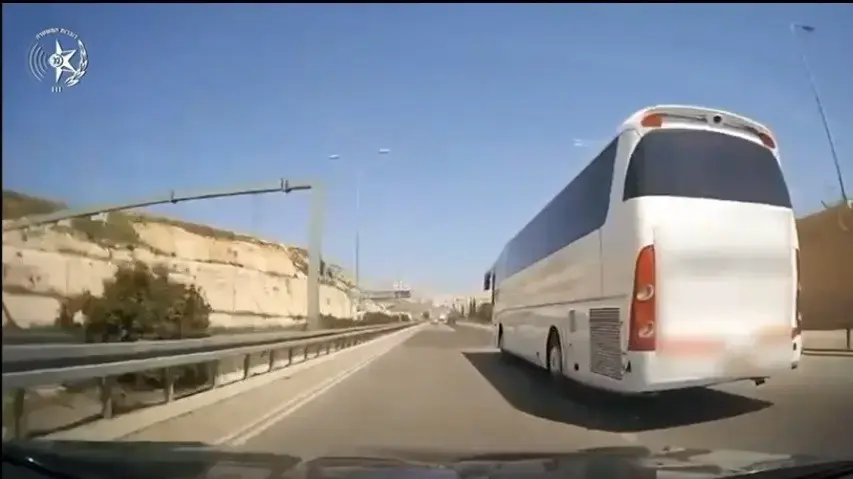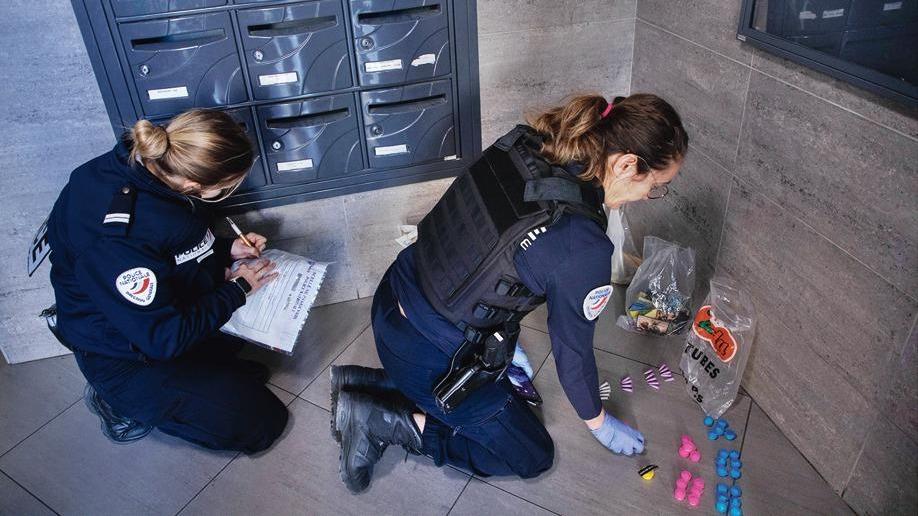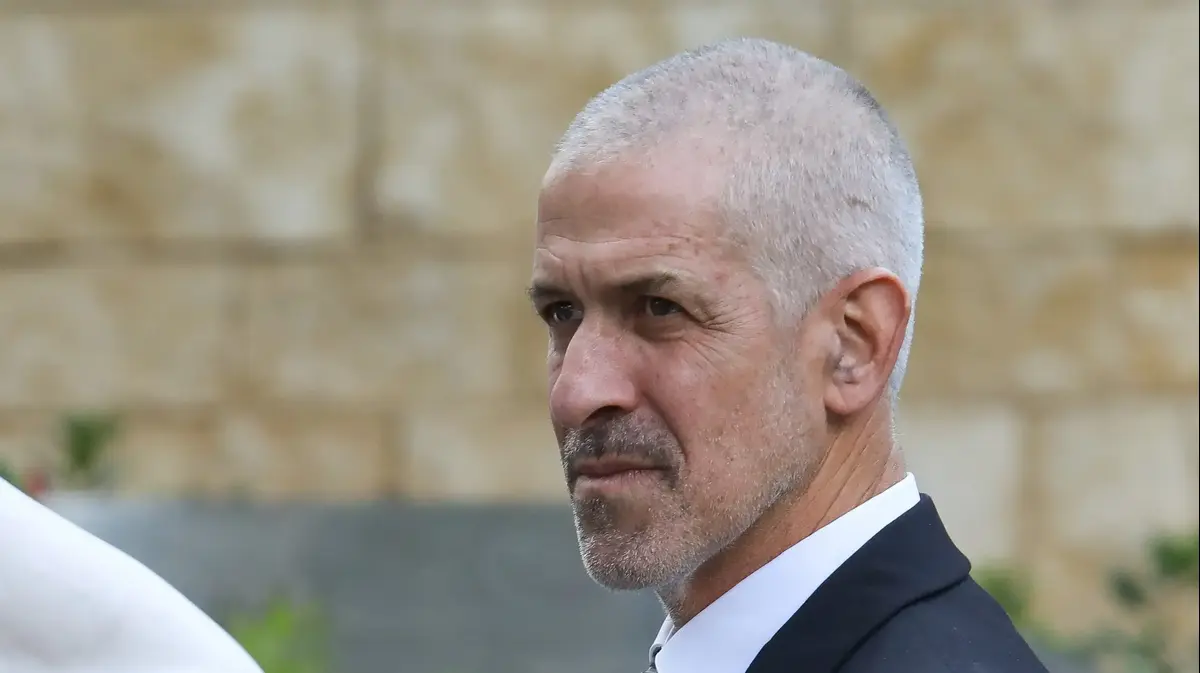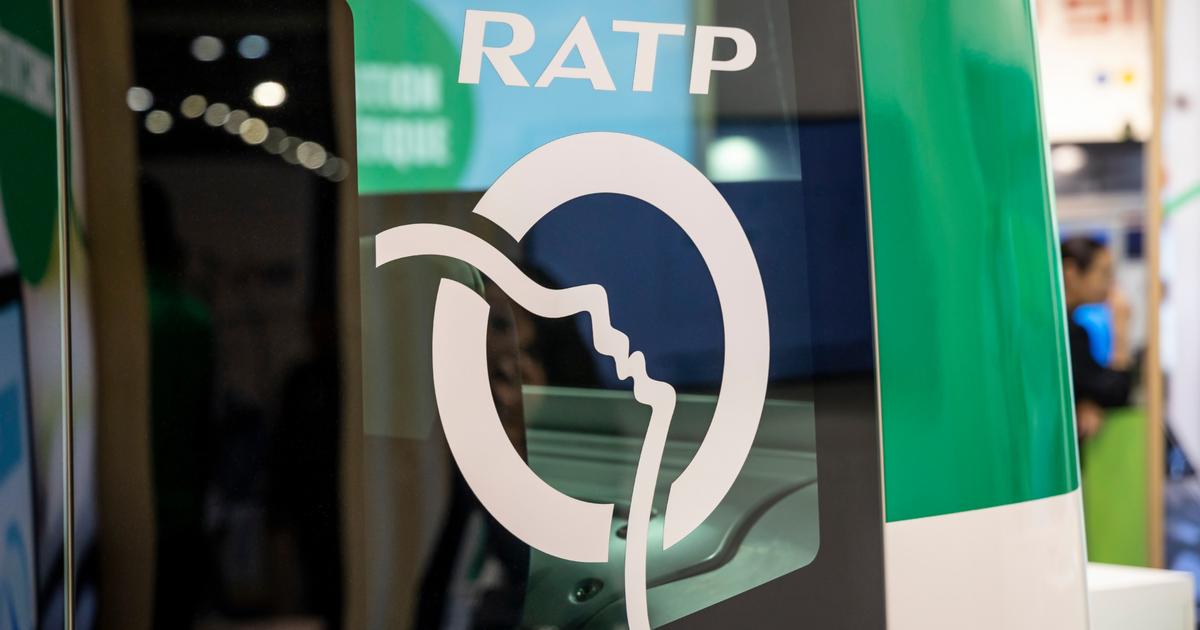Route 16 at the entrance to Jerusalem.
A difficult start at the opening, but the data proves that it has a good effect on the speed of travel in other lanes in the city as well (Photo: Flash 90, Olivia Pitosi, Flash 90)
It started badly: already on the first day when the new entrance to Jerusalem, road 16, was opened, long traffic jams formed at both ends of it: at its connection with the Begin road and the Givat Mordechai interchange in the center of the capital, and on the other side, at its connection with road number 1, just before the entrance to the Harel Tunnel (my name No Jerusalemite knows better as the Castle Tunnel).
A section of several hundred meters where traffic needs to converge from five lanes to only three.
An investment of one billion shekels made by the Ministry of Transportation seemed like a crazy waste.
Even the Director General of the Ministry of Transportation, Michal Frank, said that if the road were brought up to the discussion table today, it would most likely not have been paved.
But three months later, it turns out that the suspect actually has an alibi.
Data received by Walla Maariv reveals for the first time how much the road has eased traffic congestion on other roads in Jerusalem, and how much it has shortened car travel times in and out of the city.
True, the traffic jams during peak hours are still here, but despite this, most of the Jerusalemites around him enjoy shorter trips than in the past.
A year ahead
Reminder: The road, which was designed as a response to the frustrating traffic jams at the main entrance to the city through the Sakharov Interchange and the Koltrava Bridge area, stretches for about six kilometers. It starts at the bridge over Emek Arzim to which you descend from road number 1, continues through two double tunnels, between which is an interchange that allows a descent to Givat Shaul, Mount Nof and Beit HaKerem, and ends shortly after Shaare Zedek Hospital, at the Beit intersection adjacent to the Givat Mordechai neighborhood and above Begin Road, the "Ayalon Routes" of Jerusalem.
Mining began in 2019 and the road built by the Shapir Company and supervised by the Israel Routes Company, opened at the end of August, when in an all too rare manner In the field of infrastructure in Israel, it opened a year ahead of schedule. One of the secrets was the structure of the tender published by Israel Routes and the encouragement of Shapir's bulldozers to give gas: from the moment the road opens until the year 2048, Shapir will receive NIS 21 million every three months for the maintenance and operation of the road, so that the faster the road is opened More, the project will bring her more money.
Moshe Leon, Mayor of Jerusalem: "Route 16 is a central part of the city's traffic management and the alleviation of traffic jams" (photo: official website, photo - Reuven Kapucinski)
Fast lanes
But what about Jerusalemites and visitors to the city?
According to data from the transportation master plan, the joint body of the Ministry of Transportation and the Jerusalem Municipality that manages traffic in the city, it is possible to detect a significant increase in travel speeds at the other entrances to the city since Route 16 was opened: the main entrance from Route 1 through Sakharov Gardens, Route 9 connecting Route 1 and the north of the city, and Route 50 (Begin), from where you enter the city from the north (Mudi'in and Givat Ze'ev) and the south (Gush Etzion).
For example, comparing the travel speeds between 7:00 and 9:00 a.m., before and after the opening of the road, reveals that on the section of the Begin road from the Benzion interchange to the Golda interchange, the entrance to Jerusalem from the north, the travel speed increased from 41 to 73 km/h. Between the Golda interchange and the Givat Shaul interchange, the speed increased from 25 to 48 km/h.
On road number 1, from the Hamad interchange to the exit interchange, the average travel speed increased from 56 to 71 km/h, after a lot of traffic was diverted from the continuation of road 1 to highway 16. Thus, in the section between the exit interchange and Sakharov Gardens, Ben Gurion Boulevard as it appears on the maps, The speed increased from 56 to 69 km/h.
The same goes for sections of the busy Begin road at those hours: in the section between the Beit junction and the Givat Shaul interchange and in the section in the opposite direction, travel became faster by 4 km/h.
The positive effect is also evident on urban roads in the vicinity. On Herzl Boulevard, for example, in the section between Shazar and Yitzhak Boulevard Rabin, the driving speed increased from 9 km/h to 14 km/h.
However, there are also roads where travel has slowed down, especially those that lead to and from Route 16.
During those hours driving on Bezalel Bezeq Street towards the city center, between the Mordechai Interchange and Davidson Square, the driving speed dropped from 32 to 21 km/h, as more traffic than before is now draining onto this city road. Hadar, the speed dropped from 32 to 21 km/h.
On Rupin Road from Haim Hadar to Stefan Weisz, a slowdown was recorded from 36 to 29 km/h.
On Bate Boulevard, in the section between Mount Herzl and Givat Marderachi through Shaare Zedek Hospital, the speed decreased at a lower rate during those hours, from 29 to 25 km/h .
Whereas in the section between Teddy Stadium and Bate Interchange on Highway 50, at the entrance to Highway 16, the speed decreased from 59 to 52 km/h.
Other roads in the area were neither negatively nor positively affected and registered a change of up to 1 km/h. On this list are the busy Yitzhak Rabin Boulevard (from Herzl Boulevard to the Kiryat Moshe interchange) which remained at 11 km/h.
The section on the Begin road between Gila and Teddy Stadium became slow by a single km/h, dropping to 75 km/h.
The speed map at the entrance to the city now looks green in those busy morning hours, with a speed of over 30 km/h on most roads, and up to 70 km/h on a few, and only a few red sections where the speed is around 10 km/h.
A revolution is underway
"The transportation revolution in Jerusalem is in full swing and today everyone sees that Jerusalem will be the first to get out of the traffic jams," says
the Mayor of Jerusalem, Moshe Leon
.
"Route 16 is a central part of the city's traffic management and the alleviation of traffic jams. The opening of Route 16 made entering Jerusalem simpler and faster and, as expected, the traffic congestion was reduced."
The second part is indeed coming true, but Leon seems a little optimistic about the first.
Today there is not a single big city in the world that has managed to get rid of the traffic jams, at most to create an alternative to them.
In Jerusalem as well, the opening of the extensions of the red line of the light rail, to Ein Kerem and Neve Ya'akov this May, and the gradual opening of the green line of the Israel Railways beginning at the end of 2024, will provide more Jerusalemites and visitors with an alternative to traveling by private car on the one hand, and buses on the other. The purple line that will open in -2029 will complete a network of light rail lines that will serve the majority of Jerusalemites.
Some of the congestion on the roads adjacent to Route 16 already has a solution.
Nativi Israel will publish in the coming weeks a tender for cutting tunnels that will directly connect Begin road to road 16, skipping every Byte intersection.
The budget: NIS 500 million.
However, optimistic estimates speak of the completion of the works within three years.
Michaeli will decide in the coming weeks who will be responsible for the project, NATI or the municipal infrastructure company of Jerusalem, Moriah.
In the future, those arriving to the city via Route 16 will have access to the Bate parking lot, which will operate in a 'park and ride' format and will be located near the train's 'Green Line' route Relief. 2,275 parking spaces are planned for the parking lot, 30 percent of which will also include electric charging stations and parking spaces for two-wheeled vehicles. The goal is that those coming to the city will use the new road to reach it, and then go through the parking lot for public transportation. The pit for the parking lot has already been dug, and the Shapir company won the tender to build the parking lot .
Another problem that has not yet been resolved is the construction of a new road today without a public transportation route: Route 16 has only two lanes in each direction, and the Ministry of Transportation is in no hurry to expropriate one of them for the bus lines.
In the meantime, only one line, Egged's 490, which connects the south of the city to the Sevidor station in Tel Aviv, operates three times during peak hours and once during off-peak, and is already in good demand: 900 passengers per day, compared to 2,250 on the corresponding lines 405 and 480 that depart from a central station.
According to the data of the Ministry of Transportation, the total number of passengers on the three lines has increased by 12% since line 490 was activated. Currently, only one more line is planned to pass through the road, from Mevsheret Zion to Malha.
What's more, the central station and the hundreds of lines that pass through it is one of the beneficiaries of the opening of Route 16, which reduced traffic in the Sakharov Interchange area by about 40%, and together with the traffic lights at the entrance and exit of the city significantly shortened travel times on intercity buses.
"90% of Jerusalemites now travel faster thanks to Route 16," said Kobi Mamlia, head of the Jerusalem Municipality's Transportation and Infrastructure Development Division, and director of the Metropolitan Center for Traffic Management and Public Transportation.
"Many neighborhoods that suffered from traffic jams were relieved. But the road was not designed to encourage private car travel. The park-and-ride parking lot at the Bate Interchange is one of 11 such parking lots that we are establishing at all the entrances to the city, with a total of 10,000 parking spaces, the goal of which is to get drivers to leave their cars at the entrance to the city and pass For public transportation. Those who will actually travel by public transportation will be able to pass Rabbi Ko at the exit of the parking lot at the end of the day and will not have to pay for parking.
We do not aim to encourage the use of a private vehicle, on the contrary.
When the light rail network in the city is completed, and the alternative to the private car is completed towards the end of the decade, we will start collecting a congestion charge from those who insist on entering Jerusalem in a private car."
Transport Minister Rav Michaeli.
Who will be responsible for the project, NATI or the municipal infrastructure company of Jerusalem, Moriah? (Photo: Reuven Castro)
"Stopping paving is not the solution"
Shoki Cohen, a transportation planner and senior economist,
who participated in the planning of Route 6 and many other roads in Israel, says that Route 16 brings much-needed relief to congestion, although it is expected to decrease in the future.
"There is no single solution to traffic congestion, light or heavy rail does not do it alone, and certainly not the addition of roads. The addition of Route 16 increases the transportation supply. And as soon as there is more supply, there is also more demand, and there will always be peak hour congestion. But the road Allows more traffic to proceed around it."
But now there are people who in the past were afraid to drive in a private car during rush hour, and now they find that it's worth it, and they leave Rabbi Ko behind.
"There is an increase in demand, and in the future the improvement in traffic will be smaller than now. But you can look at a similar road in its concept, 531 in Sharon, which although the traffic on it is slower than it was when it opened a decade ago, but still the travel times of those who pass through it are still shorter than they were before that opened
"There is a tendency to only look at the peak hours when dealing with traffic, but people travel not only at eight in the morning and five in the afternoon, but also in the evening, at noon on Friday and Saturday. In the evenings we are not talking about traffic jams because there are none, but there are rivers of traffic today even at 11 At night. Route 16 opens up access to large neighborhoods in the south of the city, such as Gila and Talfiot, for those who come to them from outside Jerusalem, and for those who live in them and want to leave the city."
But the public interest is not to transfer the people from the private car to public transportation, and not to add roads?
"As mentioned, there is no single solution. A road is irreplaceable in traffic for trucks and smaller commercial vehicles, for example, which cannot be sent to the light and heavy rail."
So what needs to be done besides new roads?
"The solution to traffic jams is less travel. Remote work, from home or its surroundings. Shared travel. There is a basket of solutions. Stopping paving roads is not the solution."
Of money
Tags
Jerusalem
Traffic jams
Shafir Engineering












/cloudfront-eu-central-1.images.arcpublishing.com/prisa/DIAGMBIFCBFTJADD5SB7GXXY2A.jpg)

